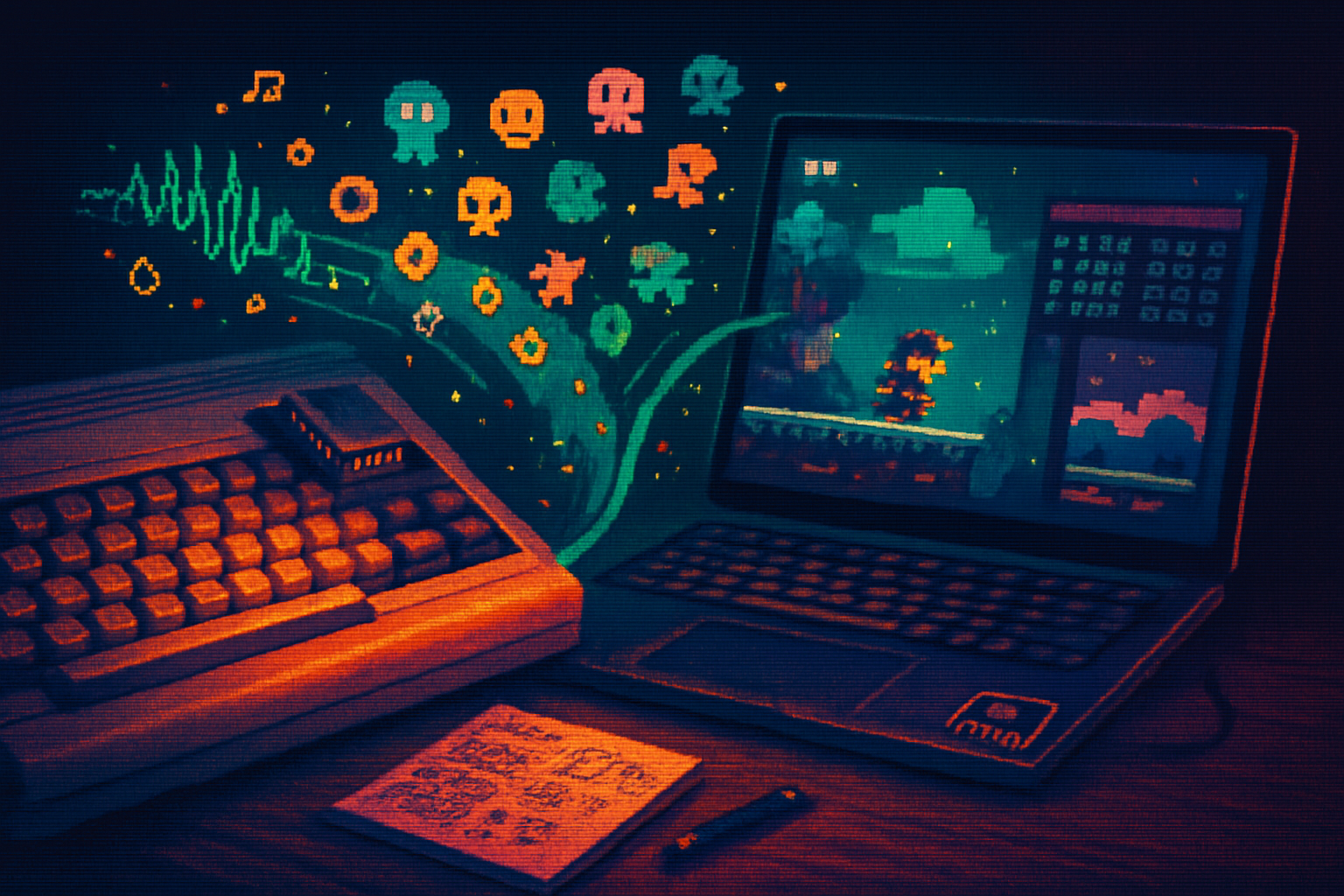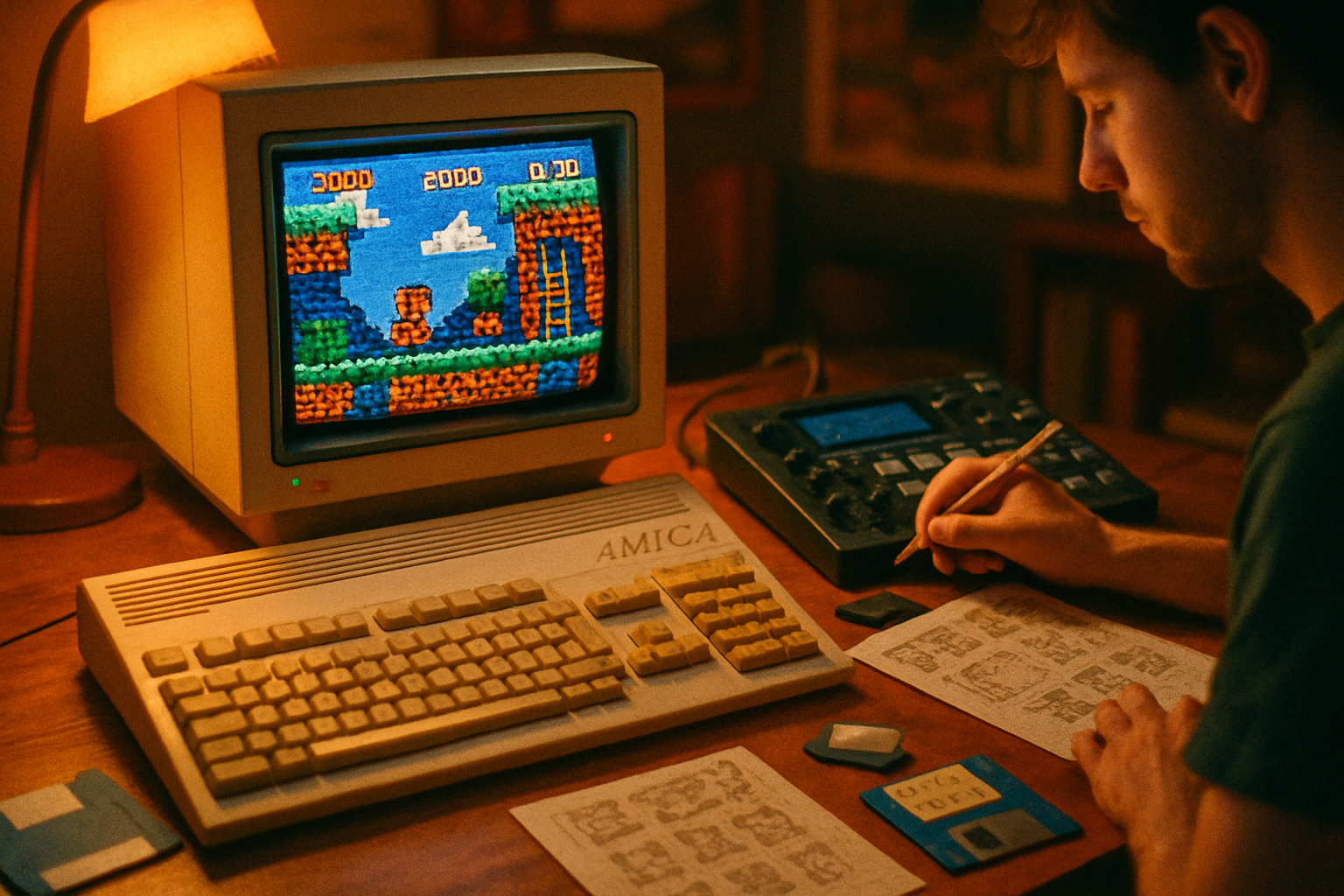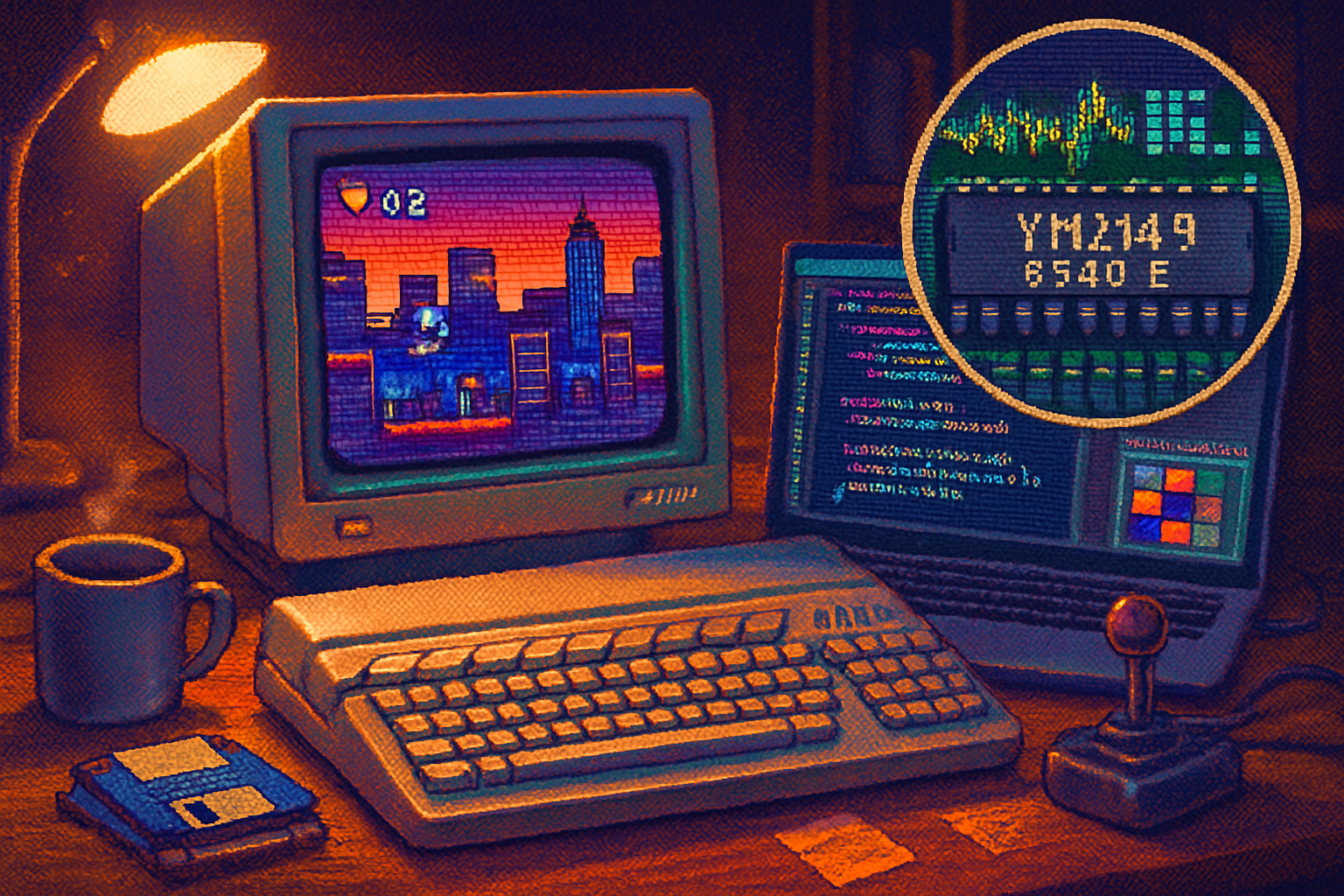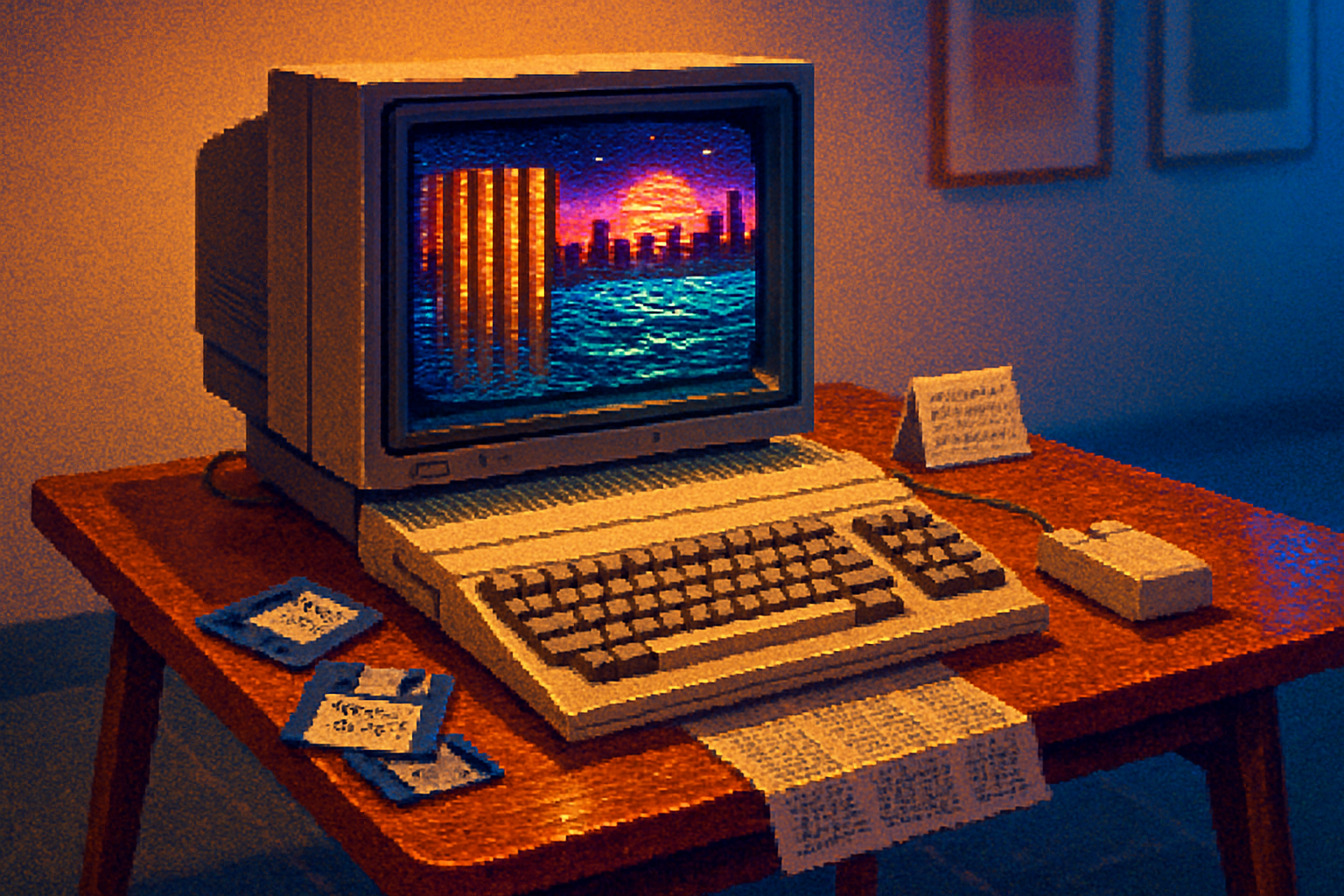· retrotech · 7 min read
Revisiting the Amiga 500: A Time Capsule for Modern Game Developers
The Amiga 500 packed custom chips and a creative community that squeezed extraordinary games and demos from modest hardware. Modern indie developers can learn from Amiga techniques-bitplanes, blitter-driven blits, copper timing, tracker music and constraint-led design-to build efficient, memorable games today.
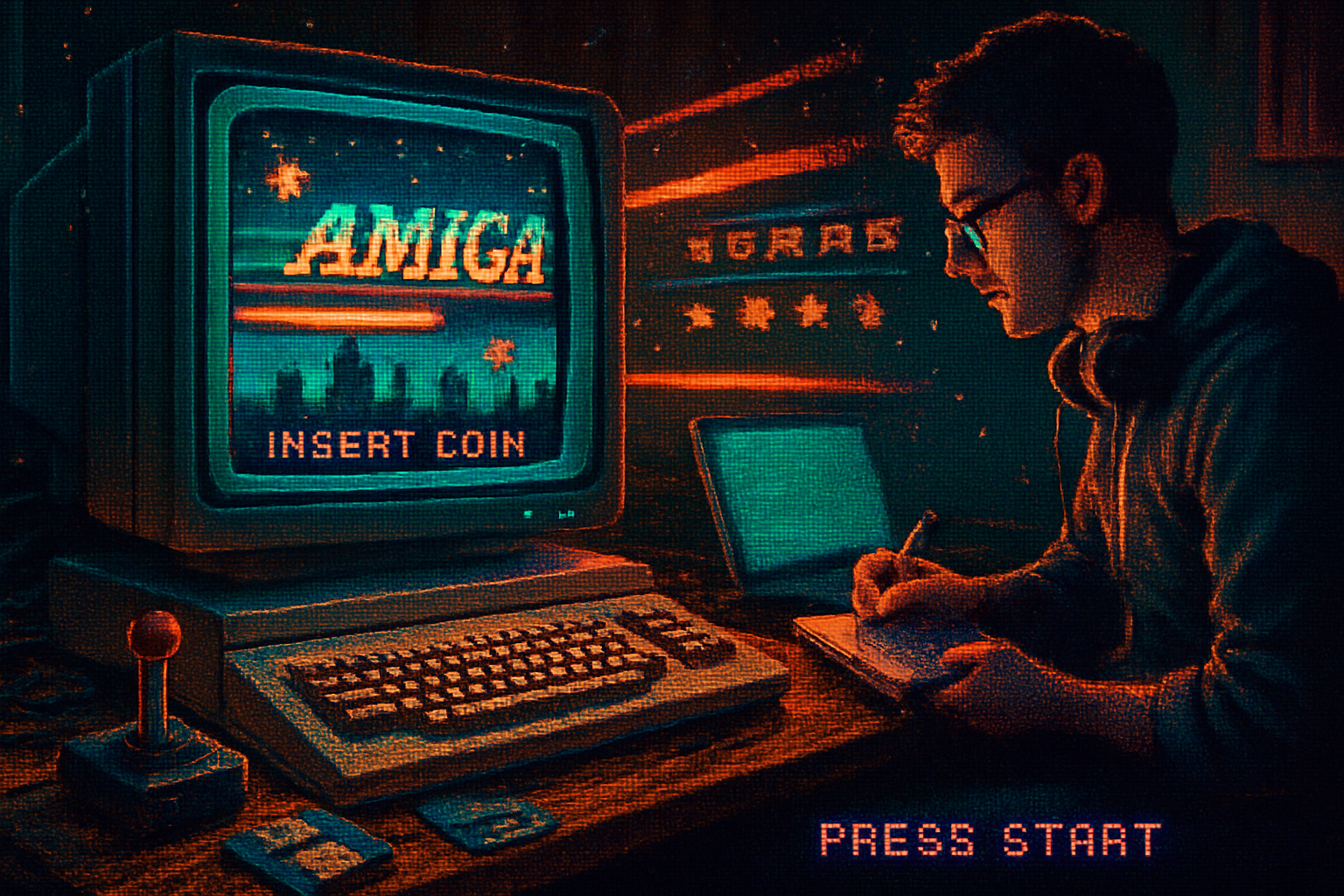
Why the Amiga 500 still matters
The Amiga 500 (released 1987) was a watershed machine: affordable, graphically capable and engineered around clever co-processors rather than brute CPU cycles. Its architecture rewarded artists and programmers who understood the machine’s pipeline and timing. That combination produced games and demos that looked and sounded far beyond what the 7–8 MHz CPU might suggest.
If you build games today-especially as an indie-you don’t need an Amiga to learn from the Amiga. The machine teaches discipline about budgets, clever hardware use, tactile audio, and doing more with less. Those lessons map directly onto modern constraints like mobile GPU limits, short development cycles, and small teams.
Relevant background reading: the Amiga 500 overview and chipset pages are good primers: Amiga 500 (Wikipedia) and Amiga chipset (Wikipedia).
The key pieces of Amiga magic (at a glance)
- CPU - Motorola 68000 - the general-purpose processor; modest by today’s standards.
- Custom chips - Agnus/Denise/Paula - each handled specific tasks that offloaded work from the CPU:
- Agnus (including the blitter and copper) handled bitplane manipulation and fast memory copies.
- Denise managed the display, bitplanes, and sprites.
- Paula provided four-channel sampled sound and DMA-driven audio.
These chips let the Amiga do hardware-assisted compositing (blits, sprites, bitplanes) and precise timing effects via the copper co-processor. For details on each subcomponent see: Copper (Amiga), Blitter (Amiga), and Paula (Amiga).
A few graphics concepts the Amiga popularized:
- Bitplanes - image data stored in plane layers rather than packed pixels; bitplanes allowed cheap palette manipulation and compositing. See
- HAM (Hold-And-Modify) - a special mode that expanded apparent color depth in exchange for clever per-pixel rules (
- Copper lists - short instruction lists that ran in sync with the video beam to change registers mid-frame and produce scanline effects.
Techniques that made Amiga games stand out (and why they still inspire)
1) Blitter-driven graphics: batching and offload
The blitter could copy, fill, and combine blocks of memory (bitplanes) extremely fast compared to CPU loops. The result was efficient software compositing-parallax backgrounds, tiled maps, sprite rendering-without burning CPU cycles.
Modern analog: sprite atlases + GPU sprite batching + compute shaders or texture copies. The lesson: offload repetitive data-motion work to the right hardware and design assets for that pipeline.
2) Copper timing: scanline-accurate effects without tearing
Copper allowed games to change palette, display window, scroll registers and more, at precise scanline positions. This enabled split-screen palettes, per-scanline gradients, and special effects seemingly beyond the hardware’s color limits.
Modern analog: GPU post-processing passes and scanline-aware shaders. Even when you can’t access a scanline interrupt, you can simulate it with a full-screen shader that uses the Y coordinate to vary parameters.
3) Sampled multi-channel audio via Paula & tracker culture
Paula provided four PCM channels with DMA mixing. Musicians built tracker workflows (e.g., ProTracker) where music was composed as sequences of samples and effects-compact, repeatable and ideal for iterative composition.
Modern analog: use of samplers and modular audio systems (and trackers like MilkyTracker) for tight memory budgets and fast iteration. Trackers remain a great way to iterate music tightly integrated with gameplay. See Tracker (music) (Wikipedia).
4) Creative compression & procedural techniques from the demo scene
The demo scene on Amiga pushed boundaries-procedural geometry, realtime raster effects, tiny packed code, and streaming decompression. It wasn’t just saving space; it was a mindset of algorithmic artistry.
Read about the demoscene (Wikipedia) for how constraints were used as creative fuel.
How these principles translate to modern indie development
Here are concrete lessons and techniques you can adopt now, mapped from Amiga ideas to present-day workflows.
Constraint-first design: embrace limits intentionally
- Set strict budgets early - CPU/gpu draw calls, texture memory, audio footprint.
- Use those budgets to steer art and gameplay choices. Constraints encourage distinctive aesthetics and focused mechanics.
Why it works: With limited resources you make decisive trade-offs: what matters visually, sonically and mechanically.
Offload and pipeline-aware design
- Identify repetitive data transformations (sprite batching, particle updates, audio mixing) and push them to the GPU or parallel worker threads.
- Structure assets to suit the pipeline-tile-friendly art, atlases, pre-baked lightmaps.
Analogy: the Amiga’s blitter/gfx chips did this; today the GPU or a streaming worker can play that role.
Timed visual effects (the copper idea) without hardware copper
- Implement scanline-aware shaders - vary palette, brightness or distortion by screen Y.
- For 2D engines, create a small per-scanline uniform buffer or a texture that the fragment shader samples to get varying parameters.
Example shader fragment (pseudocode) for a palette-based vertical gradient:
// fragment shader pseudocode
float v = gl_FragCoord.y / screenHeight;
vec3 color = texture(paletteTex, vec2(v, 0.5)).rgb;
vec4 base = texture(spriteTex, uv);
outColor = vec4(base.rgb * color, base.a);This mimics copper-driven palette changes-cheap and expressive.
Palette-driven art and shaders
- Limit palettes intentionally (e.g., 16–64 colors) and force artists to work within them.
- Use palette lookup textures in shaders to emulate bitplane or palette swapping tricks.
- Palette restriction simplifies color choices and creates a strong visual identity.
Tracker workflows and audio-first iteration
- Try composing with trackers (MilkyTracker, OpenMPT) to get fast iteration on looping, pattern-based music. They map well to memory-conscious sample usage.
- Mix priority-driven audio systems - fewer voices but prioritize sfx over music or vice versa depending on gameplay context.
Tools: MilkyTracker, OpenMPT.
Procedural content and runtime generation
- Reuse algorithmic content (tile generation, palette dithering, procedural enemies) to reduce asset size.
- The demo scene relied on realtime algorithms; modern indie games can use procedural techniques for variety and compactness.
Compression, streaming and loading strategies
- Use compressed asset formats and stream large assets dynamically.
- For small teams, consider runtime decompression strategies used on Amiga demos - small decompressors unpack geometry or textures at load time.
Fast iteration through tooling and emulation
- Prototype constrained ideas quickly on fantasy consoles (PICO-8, TIC-80) or directly with emulators like WinUAE to study the Amiga’s behavior.
Practical checklist for an Amiga-inspired indie project
- Choose an explicit resource budget - e.g., maximum texture memory, max polygons/particles, audio channels.
- Pick a small palette and commit to it across UI and assets.
- Design a sprite/texture atlas strategy to minimize draw calls (the blitter lesson).
- Implement a scanline-aware shader or per-scanline parameter map for dynamic per-row effects.
- Try composing music with a tracker to learn compact, pattern-based composition.
- Use procedural generation for repeating content (tiles, backgrounds, simple enemies).
- Profile early - find the hot loops and think where you can offload work (GPU, job system, compute shaders).
- Iterate art and audio tightly-small files, quick rebuilds, instant feedback.
Examples and mini-implementations
- Simulating copper palette changes in a modern 2D engine
- Precompute a 1D texture that encodes palette multipliers per scanline.
- In your fragment shader, sample that texture with the screen Y to adjust color or brightness.
- Blitter-style batching
- Build large vertex buffers representing many sprites and update them in bulk rather than per-sprite draw calls.
- Upload position and UV offsets in a single dynamic buffer.
- Tracker-driven dynamic music
- Use short looped samples and drive pattern changes in code to react to gameplay (e.g., raise percussion density as threat increases).
Inspiration: where to look next
- Read the hardware docs and retro write-ups to appreciate the original constraints: Amiga 500 (Wikipedia).
- Explore the demo scene to see what creativity under constraints looks like: Demoscene (Wikipedia).
- Try emulators and trackers: WinUAE, MilkyTracker, OpenMPT.
Final thoughts
The Amiga 500 is less a nostalgia trip and more a design philosophy distilled: use specialized hardware-or its modern equivalent-intelligently, set crisp constraints, and let those limits guide aesthetic and mechanical decisions. For modern indie developers, that means focusing on pipeline-aware engineering, palette-driven art, tight audio systems, and procedural creativity.
Constraints are not restrictions; they are creative scaffolding. If you let them, those scaffolds will shape memorable games.
References
- Amiga 500 - https://en.wikipedia.org/wiki/Amiga_500
- Amiga chipset - https://en.wikipedia.org/wiki/Amiga_chipset
- Copper (Amiga) - https://en.wikipedia.org/wiki/Copper_(Amiga)
- Blitter (Amiga) - https://en.wikipedia.org/wiki/Blitter#Amiga_blitter
- Paula (Amiga) - https://en.wikipedia.org/wiki/Paula_(Amiga)
- Hold-and-Modify (HAM) - https://en.wikipedia.org/wiki/Hold-and-Modify
- Tracker (music) - https://en.wikipedia.org/wiki/Tracker_(music)
- Demoscene - https://en.wikipedia.org/wiki/Demoscene
- MilkyTracker - https://milkytracker.titandemo.org/
- OpenMPT - https://openmpt.org/
- WinUAE - https://www.winuae.net/
